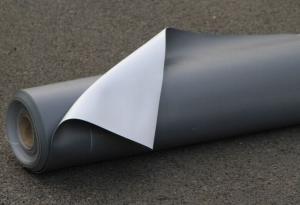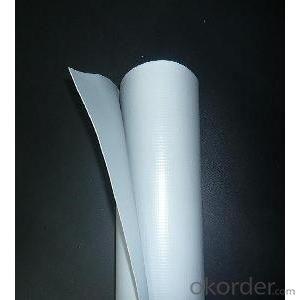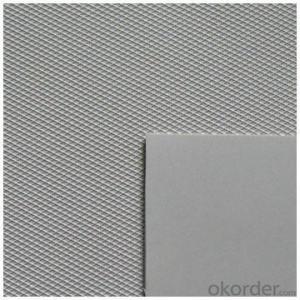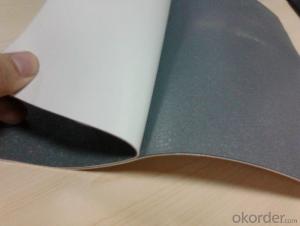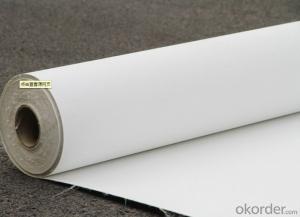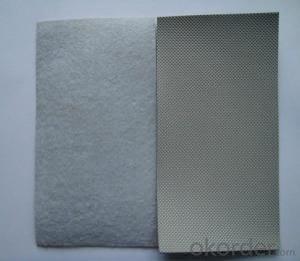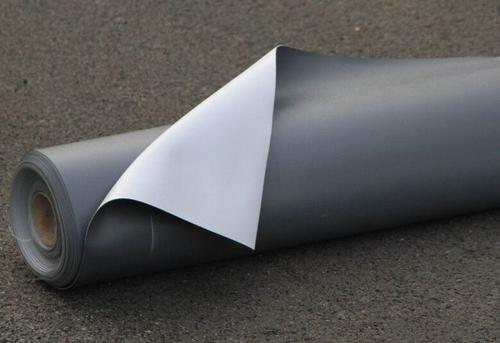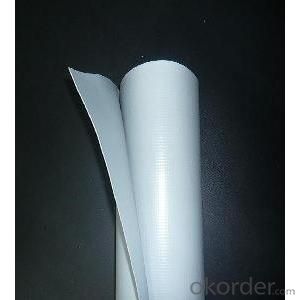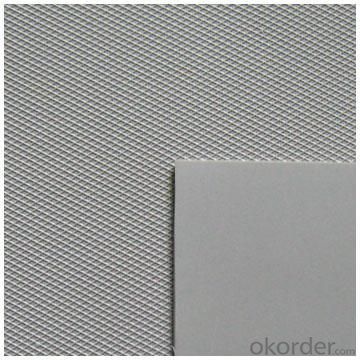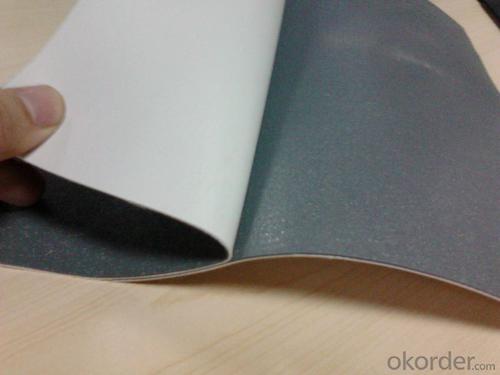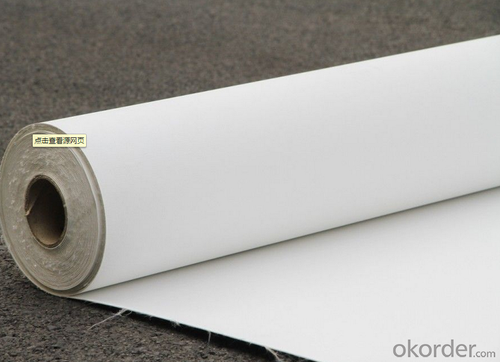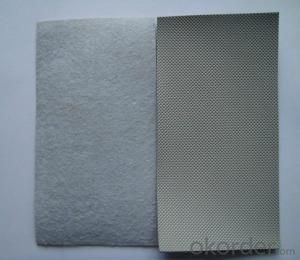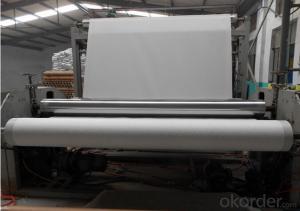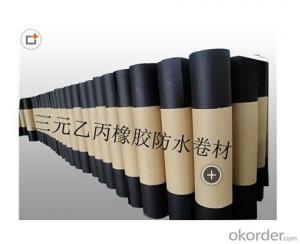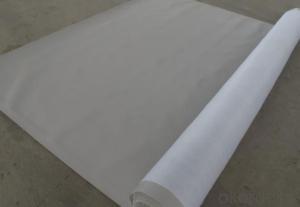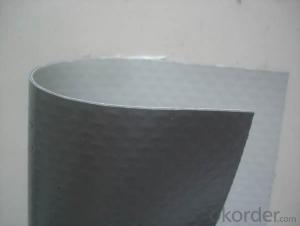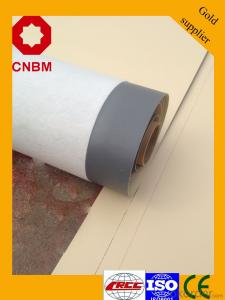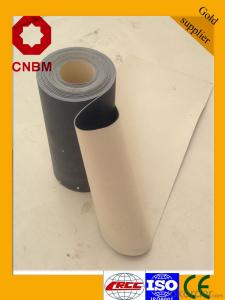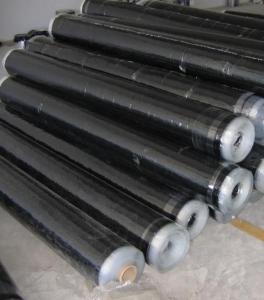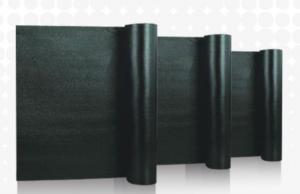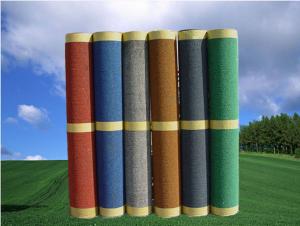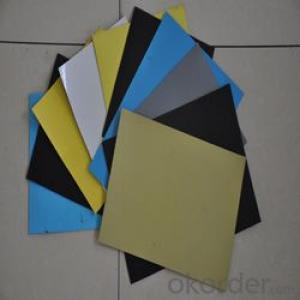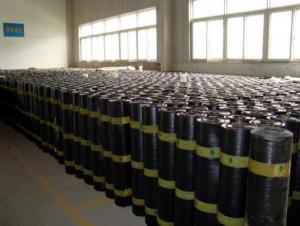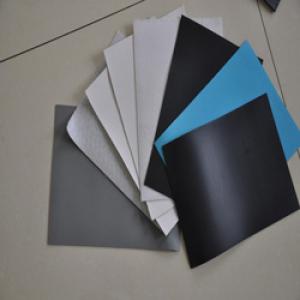PVC Waterproofing Membrane for Planting Roofing
- Loading Port:
- Shanghai
- Payment Terms:
- TT OR LC
- Min Order Qty:
- 20000 m²
- Supply Capability:
- 5000000 m²/month
OKorder Service Pledge
OKorder Financial Service
You Might Also Like
PVC Waterproofing Membrane for Planting Roofing
Product Description of PVC Waterproofing Membrane for Planting Roofing:
PVC waterproofing membrane is an excellent high-quality polymer waterproof sheet, made of PVC resin by adding plasticizer, anti-UV agent, anti aging agent, and stabilizer and other processing aids through extrusion and molding. As the highly recommended product by the Ministry of Construction, it is featured by high tensile strength, great elongation, good stability, small shrinkage, low-temperature performances, good resistance to weathering and root
penetration, and long service life.
Features of PVC Waterproofing Membrane for Planting Roofing:
1.Long service life and weathering resistance; and the materials can be used for 30 years on the roof and 50 years underground.
2. High tensile strength, great elongation, and small size change during heat treatment.
3. Good low temperature flexibility and adaptability to environmental temperature changes.
4. Good resistance to root penetration. It can be made for green roofs.
5. Excellent resistance to puncture and impact.
6. Convenient for construction (can be welded), solid and reliable, and Eco-friendly.
7. Strong resistance to chemical corrosion, suitable for special occasions.
8. Good plasticity, convenient and quick corner detail treatment. Easy maintenance and low cost.
9.After 2,000 hours of manual weathering verification
Classification of PVC Waterproofing Membrane for Planting Roofing:
1. N: Homogeneous PVC membrane
2. L: PVC membrane with fabric backing
3. W: Reinforced PVC membrane
Advantage of PVC Waterproofing Membrane for Planting Roofing:
1.) Mixing automation. Apply automatic temperature control automatic time control and automatic feed control.
2.) Extrusion equipment uses twin screw coextrusion. Screw temperature uses computer automatic temperature control system.
3.) Handpiece uses large width didhead extrusion equipment.
4.) Sophisticated three-roller calender equipment. The space between equiment is controlled by automation system.
Technical Data of PVC Waterproofing Membrane for Planting Roofing:
No. | Item | Model Ⅱ | |
1 | Tensile Strength Mpa ≥ | 12.0 | |
2 | Elongation at break% ≥ | 250 | |
3 | Shrinkage rate % ≤ | 2.0 | |
4 | Flexibility at low temperature | No crackle at -25oC | |
5 | Water tightness | Watertight | |
6 | Puncture resistance | Watertight | |
7 | Heat aging treatment | Appearance | Free from bubble, crack, cohesion and void |
Change rate of tensile strength % | +20oC | ||
Change rate of elongation at break | |||
Flexibility at low temperature | No crack at -20oC | ||
8 | Chemical corrosion resistance | Change rate of tensile strength % | +20 |
Change rate of elongation at break | |||
Flexibility at low temperature | No crack at -20oC | ||
9 | Artificial weathering | Change rate of tensile strength % | +20 |
Change rate of elongation at break | |||
Flexibility at low temperature | No crack at -20oC | ||
Application of PVC Waterproofing Membrane for Planting Roofing:
1) All kinds of roofs, such as steel structure roof, planted roof etc.
2) Underground engineering, such as building basement, subways, tunnels, air raid shelter, etc.
3) Other projects like artificial lake, dam, water reservoir, grain storehouse, etc.
Images of PVC Waterproofing Membrane for Planting Roofing:
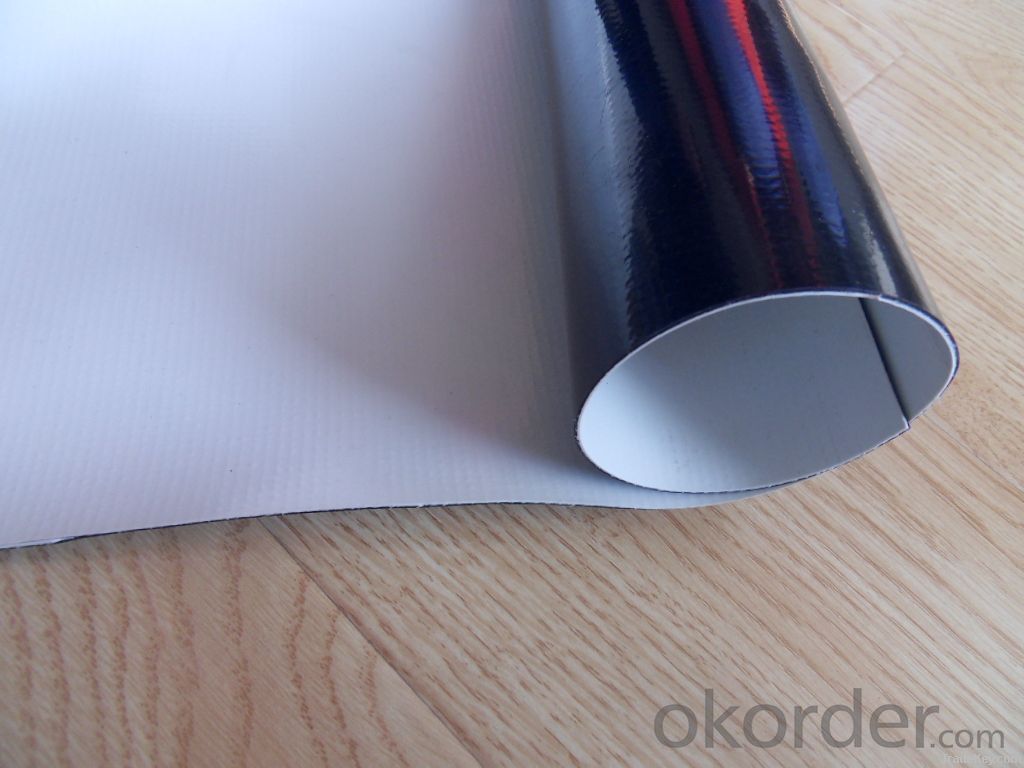
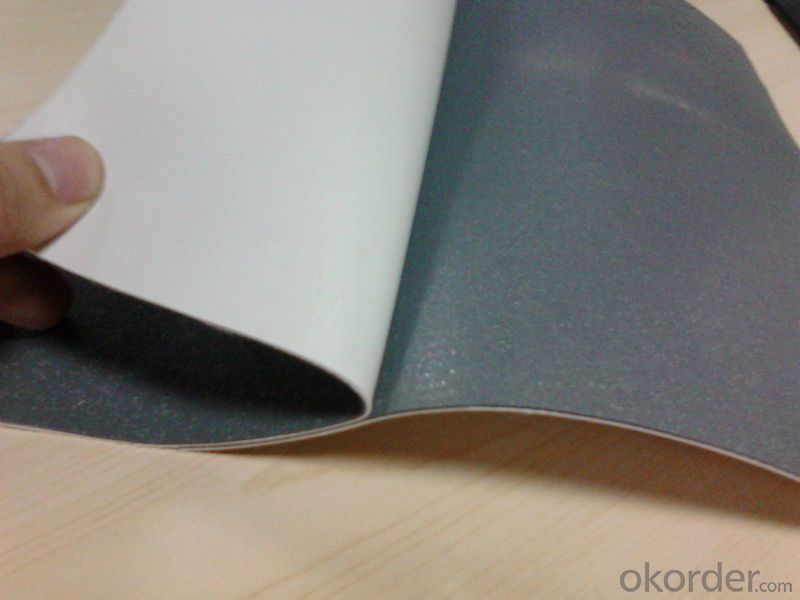
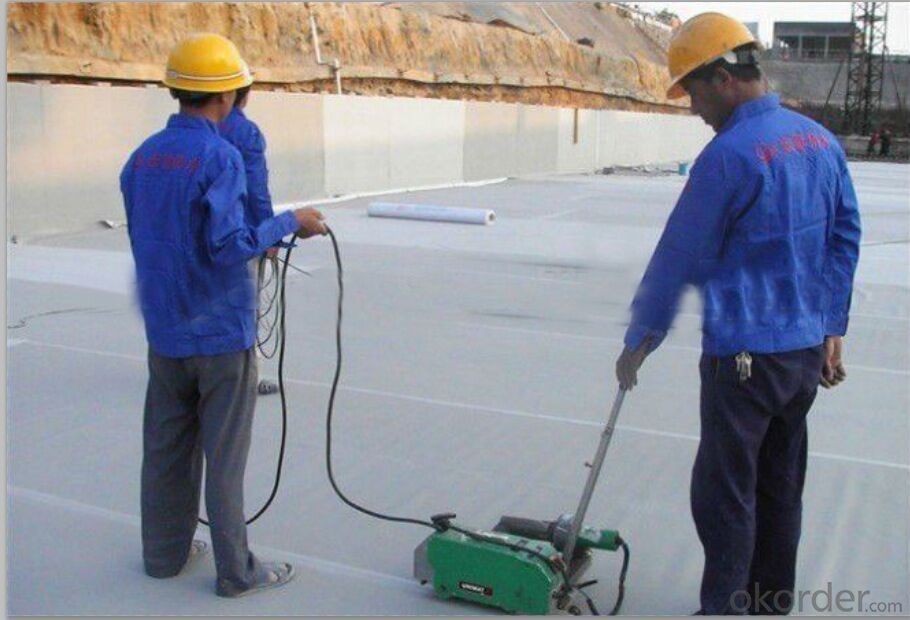
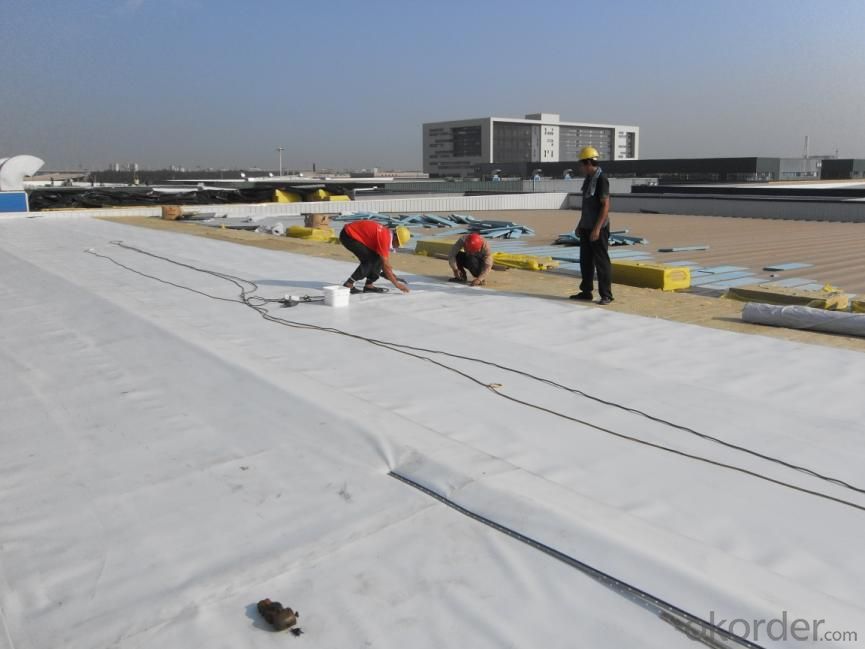
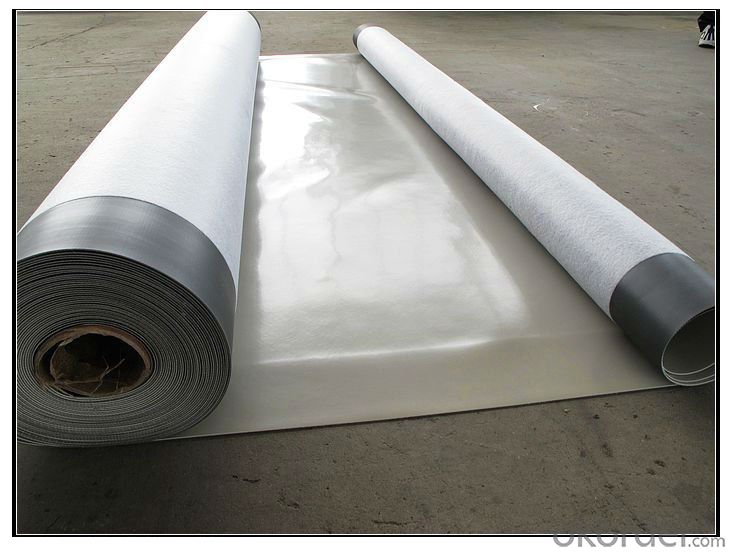
FAQ of PVC Waterproofing Membrane for Planting Roofing:
1. Can you produce 4m width?
Yes, no problem for us. We have four bases in China, largest one in this field.
2. How many quantity in one 20'' container for 1.2mm and 1.5mm?
480rolls, 11520m2 for 1.2mm and 400rolls, 9600m2 for 1.5mm
3. Can you provide free samples?
Yes, our samples are free, but express fees usually on buyer's account.
- Q: Can a waterproofing membrane be used for a basement floor moisture barrier?
- Yes, a waterproofing membrane can be used as a basement floor moisture barrier. A waterproofing membrane is designed to prevent water from seeping through surfaces, making it an effective solution for protecting a basement floor against moisture. By applying a waterproofing membrane, you create a barrier that prevents water from infiltrating the concrete floor, thus reducing the risk of mold, mildew, and water damage. It is important to ensure that the waterproofing membrane is properly installed and covers the entire basement floor to achieve maximum effectiveness. Additionally, it is recommended to consult with a professional to determine the most suitable type of waterproofing membrane for your specific basement floor and moisture conditions.
- Q: Does a waterproofing membrane require any special considerations for installation in high-humidity areas?
- Special considerations are required when installing a waterproofing membrane in high-humidity areas. The presence of high humidity can impact the membrane's performance if not addressed properly during installation. Here are some important points to keep in mind: 1. Moisture management is crucial: Before installing the waterproofing membrane, it is essential to control moisture levels in the area. Thoroughly drying the surface and resolving any existing moisture issues or leaks is necessary. 2. Vapor barriers are beneficial: To prevent moisture from seeping through the membrane, it is advisable to install a vapor barrier underneath. This is particularly important in consistently humid environments. 3. Adequate ventilation is key: To avoid excessive moisture buildup, proper airflow and ventilation systems should be in place. This promotes drying and prevents condensation, which can compromise the integrity of the waterproofing membrane. 4. Choose the right membrane: Not all waterproofing membranes are suitable for high-humidity areas. It is crucial to select a membrane specifically designed and recommended for such environments. Look for membranes with high moisture resistance and durability. 5. Professional installation is recommended: Proper installation techniques are vital for the long-term performance of the waterproofing membrane. In high-humidity areas, it is advisable to hire experienced contractors who have worked in similar conditions. By considering these factors, you can ensure that the waterproofing membrane effectively protects against moisture in high-humidity areas.
- Q: Can a waterproofing membrane be used for zoos or aquariums?
- Yes, a waterproofing membrane can be used for zoos or aquariums. Waterproofing membranes are designed to prevent water penetration and provide a watertight barrier, making them suitable for use in areas that require high levels of water resistance such as zoos or aquariums where water containment is critical.
- Q: Can a waterproofing membrane be used in conjunction with warranty or insurance policies?
- Typically, a waterproofing membrane can be used alongside warranty or insurance policies. Various waterproofing products and systems come with warranties that offer coverage for a specific duration, typically ranging from 5 to 20 years or even longer. These warranties often guarantee the effectiveness and durability of the waterproofing membrane, and may include provisions for repairs or replacements in the event of any failures or defects. Moreover, insurance policies may also provide coverage for damages caused by water leaks or flooding. By installing a waterproofing membrane, property owners can minimize the risk of water damage and potentially lower their insurance premiums. It is advisable to inquire with your insurance provider to determine if they offer any discounts or incentives for utilizing waterproofing systems. Nevertheless, it is crucial to note that the coverage provided by warranties and insurance policies may vary based on specific terms and conditions. It is recommended that you carefully review the details of the warranty or insurance policy and seek guidance from professionals to ensure that the waterproofing membrane aligns with the requirements and specifications outlined in these agreements.
- Q: Can a waterproofing membrane be used for plaza decks?
- Yes, a waterproofing membrane can be used for plaza decks. Plaza decks are typically outdoor spaces that require protection from water infiltration to prevent damage to the underlying structure. Waterproofing membranes are designed to create a barrier that prevents water from seeping into the deck and causing issues such as leaks, deterioration, and structural damage. These membranes are often made of materials such as bitumen, rubber, or polyurethane, which are highly resistant to water penetration. By installing a waterproofing membrane on a plaza deck, it ensures that the deck remains watertight and protects the integrity of the entire structure. Additionally, these membranes can also provide added benefits such as UV resistance, durability, and ease of maintenance, making them an ideal solution for plaza decks.
- Q: Can a waterproofing membrane be painted or coated?
- Yes, a waterproofing membrane can be painted or coated. However, it is essential to use a paint or coating specifically designed for use on waterproofing membranes. These types of paints or coatings are typically elastomeric, meaning they can stretch and move with the membrane without cracking or peeling. Additionally, the paint or coating should be compatible with the waterproofing membrane material to ensure proper adhesion and longevity. Before applying any paint or coating, it is advisable to clean and prepare the surface according to the manufacturer's instructions. It is also crucial to follow the recommended application process and allow sufficient drying and curing time for the paint or coating. Overall, painting or coating a waterproofing membrane can enhance its appearance, provide additional protection against UV rays and environmental elements, and extend its lifespan.
- Q: Can a waterproofing membrane be used on galvanized surfaces?
- Indeed, galvanized surfaces can benefit from the application of a waterproofing membrane. Typically employed to safeguard metal against corrosion, galvanized surfaces can experience even greater protective properties when a waterproofing membrane is utilized. By creating an additional layer of defense, the membrane effectively shields the galvanized surface from water infiltration, thereby averting potential rust or damage. However, it is crucial to ensure that the chosen waterproofing membrane is compatible with the galvanized surface and specifically designed for this particular application. Prior to implementation, it is advisable to seek guidance from the manufacturer or a professional in order to guarantee proper installation and compatibility when applying a waterproofing membrane to galvanized surfaces.
- Q: Does a waterproofing membrane prevent efflorescence or mineral deposits on surfaces?
- Yes, a waterproofing membrane can help prevent efflorescence or mineral deposits on surfaces. The membrane acts as a barrier, preventing water from entering the surface and carrying dissolved minerals or salts that cause efflorescence. By keeping the surface dry, the membrane helps to minimize the formation of mineral deposits.
- Q: Does a waterproofing membrane require any maintenance?
- Maintenance is indeed required for a waterproofing membrane. Despite its ability to offer lasting defense against water damage, regular maintenance is vital to maintain its effectiveness. This involves checking the membrane for any indications of harm or wear, such as cracks or punctures, and promptly fixing them. Moreover, regularly cleaning the membrane to eliminate dirt, debris, and potential contaminants will assist in preserving its performance. It is advisable to have professionals who specialize in waterproofing systems carry out regular maintenance to guarantee proper upkeep and prevent any potential problems.
- Q: Can a waterproofing membrane be used for underground parking structures?
- Underground parking structures face a high risk of water infiltration because of their location and exposure to groundwater. To prevent potential damage, a waterproofing membrane is commonly used. These membranes act as a protective barrier, effectively stopping water from penetrating the structure and causing harm. Typically, they are applied to the exterior walls and floors of the underground parking structure to ensure a secure seal. In addition to safeguarding against water, these membranes also help prevent problems like mold growth, corrosion, and concrete deterioration caused by moisture. Thus, incorporating a waterproofing membrane is crucial for maintaining the long-term durability and functionality of underground parking structures.
Send your message to us
PVC Waterproofing Membrane for Planting Roofing
- Loading Port:
- Shanghai
- Payment Terms:
- TT OR LC
- Min Order Qty:
- 20000 m²
- Supply Capability:
- 5000000 m²/month
OKorder Service Pledge
OKorder Financial Service
Similar products
Hot products
Hot Searches
Related keywords
